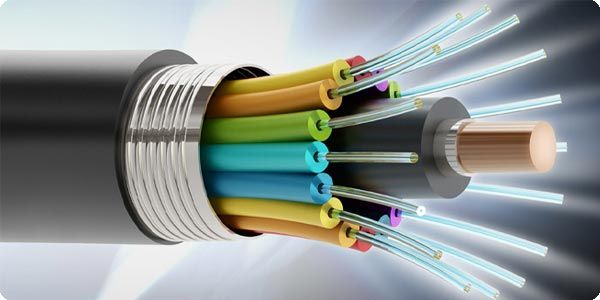
🗺️ Researchers can detect earthquakes using underwater internet cables
Researchers at U.C. Berkeley have turned 20 kilometers of fiber-optic cable into the equivalent of 10,000 seismic stations along the ocean floor. They recorded a 3.5 magnitude earthquake from underwater fault zones.
Share this story!
Fiber-optic cable has been a real game-changer for internet access and speeds in recent years. Deep beneath the ocean's surfaces, lies a gigantic network of telecommunications cables that are connecting the continents of the world to the internet.
Now, in addition to providing super-fast download speeds, researchers at the University of California, Berkeley, have successfully used the network of these cables to detect seismic activity. Researchers have turned 20 kilometers (about 12.5 miles) of the cable into the equivalent of 10,000 seismic stations along the ocean floor. In an experiment that lasted four days, they recorded a 3.5 magnitude earthquake from underwater fault zones.
The technique is called "acoustic sensing", which creates and sends pulses of light through the fiber-optic cable based upon the detection of slight movements.
Today, because of the vastness of our oceans, 70% of the Earth's surface is without earthquake detectors. The technique performed by these researchers could provide much needed data on quakes that occur under the sea. They previously tested the experiment with fiber-optic cable on land.
"There is a huge need for seafloor seismology." said Nate Lindsey, a U.C. Berkeley graduate student. "Any instrumentation you get into the ocean, even if it is only for the first 50 kilometers from shore, will be very useful. Lindsey led the experiment along with geophysics professor Jonathan Ajo-Franklin.
"This is really a study of the frontier of seismology, the first time anyone has used offshore fiber-optic cables for looking at these types of oceanographic signals or for imaging fault structures," said Ajo-Franklin. "One of the blank spots in the seismographic network worldwide is in the oceans."
There are more than 10 million kilometers (6.2 million miles) of fiber-optic cable in total, on both land and under the sea. The ultimate goal here is to harness the global infrastructure of of dense fiber-optics to measure seismic activity in regions that don't have expensive ground stations.
By becoming a premium supporter, you help in the creation and sharing of fact-based optimistic news all over the world.


